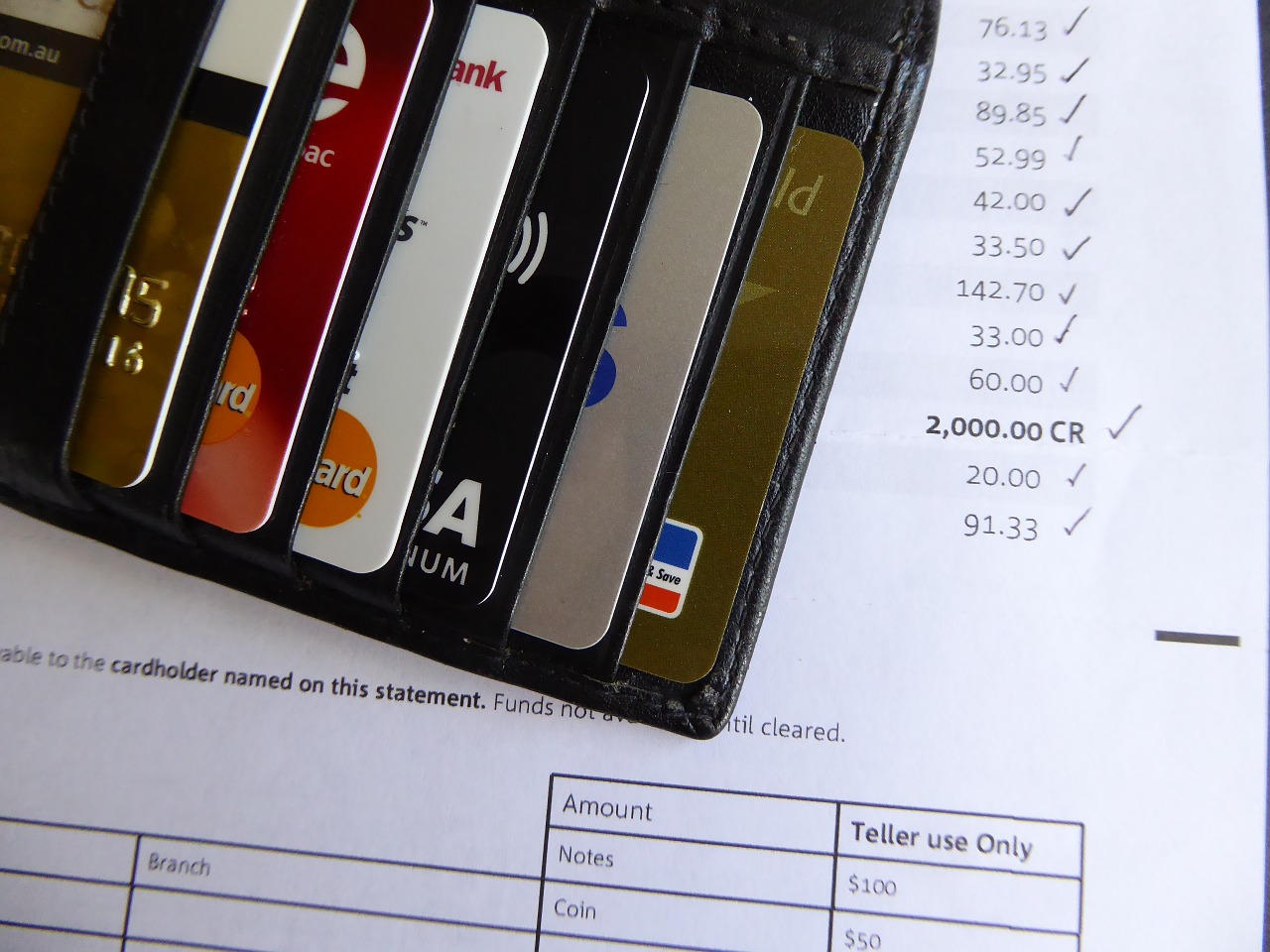
by Angela Hinkle | Sep 28, 2016
 I did it! Or should I say, I didn’t do it! Or more realistically, I almost didn’t do it! What? Spend money in the month of September. Some of you may remember my wallet really needed a break, so I set a goal to spend no money in the month of September unless absolutely necessary.
I did it! Or should I say, I didn’t do it! Or more realistically, I almost didn’t do it! What? Spend money in the month of September. Some of you may remember my wallet really needed a break, so I set a goal to spend no money in the month of September unless absolutely necessary.
Did this help? Yes, my wallet, checking account, and credit cards seem much more at peace. Was it easy? Except for a few bumps and hiccups, it wasn’t too bad. Like a good financial citizen, I paid all by bills and gave at church, I kept gas in my car, and had plenty of food (in my house).
However…
Snafu #1: The food thing was a little trickier when it came to work. I went to a conference and for five days, we only received one dinner, one lunch, and two breakfasts. The people from Idaho brought and gave out great potato chips (but I could not and should not try to live off of those). I brought lots of nuts, granola bars, and small containers of fruit in my suitcase but still had to fork out money for three dinners and one lunch with a little more substance. My traveling companion knew of the goal I had set and was nice enough to buy me dinner one night. (I think I must have looked really sad and hungry.)
Snafu #2: When did September become the season of giving? A wedding and a baby shower brought out the checkbook. Oh well, there are a new bride and mom-to-be who are happy.
At home, the only food I had to buy was bread (yes, I could have frozen some – yuck, or made some – no time) and milk (yes, I could have used the dry milk – yuck to drink) and since I miscalculated the amount of dog food in the house, I had to buy some of that, too. I will give a big shout out for canned and frozen foods. It was no big deal to not go out to eat nor go to the movies or to other forms of entertainment. (The good stuff doesn’t usually come out until October anyway.)
What about my all-important trips to the nail salon? Ha! I found a gift certificate (I love those things) that took care of both trips to the salon.
Though I didn’t go hard-core all the way, I did really well. I feel so much better and I’ve veered off my path toward debtor’s prison (yes, exaggeration).
I am blessed to have a comfortable life so this was not that difficult. One month without extra spending was a free gift I gave myself. See if giving yourself the gift of a no-spend month makes your life better. Then be sure to share your success stories.

by Angela Hinkle | Sep 7, 2016
The month of August has been a financially painful time for me. I blame this on the fact that my only child has just begun her first year at college. Lots (and I mean a whole lot) of spending happened in preparation for this auspicious endeavor.
- Ouch – I began to question if I was spending more than I was making. (This was brought on by reading Building a Spending Plan: All Six Steps, a UF/IFAS EDIS publication.) Actually a very helpful financial read. Check it out: http://edis.ifas.ufl.edu/pdffiles/HE/HE82700.pdf
- Ouch – My credit card bills in the last few months have been quite hefty.
- OUCH – The college bills for housing and tuition came due.
What to do to help alleviate some of the pain caused by this financial stress? I remember reading about “no-spend” months. People often pick February because it has the fewest number of days. But I feel the need for immediate action – and so September it is.
A no-spend month means you don’t spend money on anything except the absolute necessities. I have to pay the mortgage, the car payment, utilities, and I have to get may nails done (yes, that is, in fact, a necessity for me). But no buying clothes or shoes, going out to eat, going to the movies, buying gum or an emergency caffeinated drink. Since there is no child in my house now, I think I may actually be able to do this.
Researchers say if we tell others about our goal, we are more likely to work hard to achieve it. So I told the participants in a health class I was teaching about this goal of mine. One very sweet, gentle, older woman said, “Honey, you know you can’t do that.” My somewhat deflated response was, “Why?” Her kind answer – “You know you’re going to send that child care packages.” Right she was.
However, undeterred, quite determined actually, I have found ways to plan around such obstacles. I sent a care package to the child at the end of August and will send the next one at the beginning of October. I will eat out of the fully stocked freezer and pantry to avoid trips to the store. I will start September with an already full tank of gas. I will watch TV at home. I will do this!
Once October rolls around, check back in and I’ll let you know how I did. Wish me luck!

by Judy Corbus | Mar 15, 2016

Photo credit: pixabay.com
In spring cleaning mode? If so, now is the perfect time to de-clutter your financial life. Organizing important papers as well as purging unnecessary ones will reduce paper clutter and stress and help you to locate what you need when you need it. Let’s get started!
Store home files as follows:
- Current files – day-to-day records. These include bank account information, bills and receipts, loan agreements, and certain medical information. For a list of suggested categories, check out Financial Recordkeeping: Organizing Your Financial Life.
- Permanent files – on-going records used infrequently, such as employment and education records and health benefit information.
- Dead storage – anything you feel uncomfortable discarding, such as old tax records or real estate you’ve sold. These can be stored in less accessible drawers or boxes.
Discard the following monthly: Credit card, grocery, ATM, and debit card receipts after they appear on the statement unless they are needed for taxes, business, or proof of purchase.
Keep these items for one year:
- Paycheck stubs – save until you compare with your W-2 and Social Security earnings statements then shred.
- Canceled checks and bank statements – shred unless needed for tax purposes or can be retrieved online.
- Quarterly investment statements – double-check with year-end statements then shred.
How Long to Keep Tax Records
The IRS recommends 3-6 years for income tax records, worksheets, and documentation of deductions. Keep records for as long as needed for administration of the IRS code. Tax records often are useful in situations where financial history is relevant.
Do Not Toss:
- Birth and death certificates, adoption decrees
- Marriage licenses and divorce decrees
- Social Security cards
- Military discharge papers, including spouse, even if deceased
- Immigration documents
- Pension plan information from current and former employers
- Estate planning documents
- Life insurance policies
- Titles for property still owned
De-clutter a section at a time – if the task seems overwhelming, work at it 15 minutes a day until you’re finished. Then, enjoy less stress with organized files!
Adapted from De-Clutter Your Financial Life, Julie England, UF/IFAS Extension Lake County, and Lisa Leslie, UF/IFAS Extension Hillsborough County, 02/16.

by Judy Corbus | Feb 10, 2016
 As W-2 forms and other receipts start rolling in, we’re reminded that tax season is upon us once again. It’s exciting to get back some of your own hard-earned money in the form of a tax refund! Saving a portion of your tax refund can be a big step toward meeting your savings goals, so it’s no surprise that a 2015 tax season survey found that a majority of those who receive a refund planned to save it.
As W-2 forms and other receipts start rolling in, we’re reminded that tax season is upon us once again. It’s exciting to get back some of your own hard-earned money in the form of a tax refund! Saving a portion of your tax refund can be a big step toward meeting your savings goals, so it’s no surprise that a 2015 tax season survey found that a majority of those who receive a refund planned to save it.
This tax season, reward yourself for saving some of your refund by entering for a chance to win $25,000 through SaveYourRefund. SaveYourRefund has 101 cash prizes, including 100 weekly prizes of $100 and one grand prize of $25,000. Making smart financial decisions isn’t always easy, but splitting your refund couldn’t be simpler. Follow these quick and easy steps to enter to win in 2016:
- Use Form 8888 to split your refund. Entry to win with SaveYourRefund starts with splitting your refund into savings.
- Save $50 or more of your tax refund. In order to enter, use Form 8888 to save at least $50. There are a number of accounts you can save into including a savings account, a U.S. Treasury Direct account (savings bond), and a myRA retirement account.
- Visit SaveYourRefund.com to enter. You will automatically be eligible to win one of ten $100 prizes that will be given away every week from the start of the contest until the end of tax season.
- Upload a picture here that represents your savings goal or motivation, and you’ll be entered to win the $25,000 grand prize!
Need tax assistance? Take advantage of a Volunteer Income Tax Assistance (VITA) program. VITA programs offer free tax help to those who generally make $53,000 or less, persons with disabilities, the elderly, and limited English speakers.
Get ahead of your financial goals by splitting your tax refund into savings, and reward yourself with SaveYourRefund!
Source: Tammy Greynolds, AmericaSaves.org.

 I did it! Or should I say, I didn’t do it! Or more realistically, I almost didn’t do it! What? Spend money in the month of September. Some of you may remember my wallet really needed a break, so I set a goal to spend no money in the month of September unless absolutely necessary.
I did it! Or should I say, I didn’t do it! Or more realistically, I almost didn’t do it! What? Spend money in the month of September. Some of you may remember my wallet really needed a break, so I set a goal to spend no money in the month of September unless absolutely necessary.




